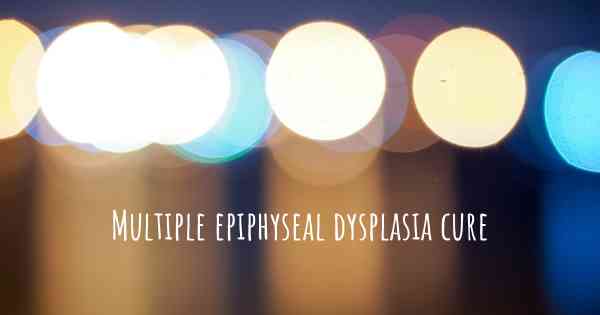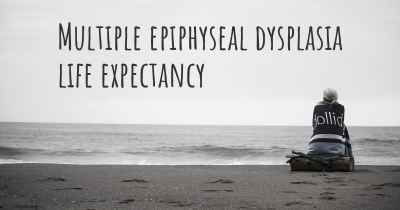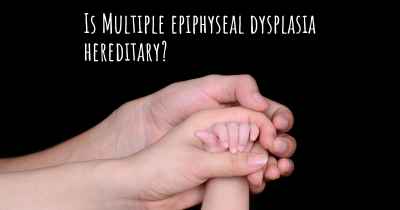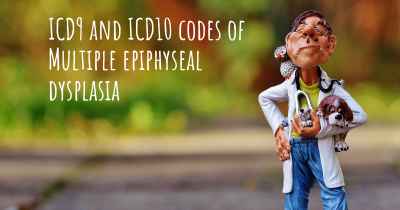Does Multiple epiphyseal dysplasia have a cure?
Here you can see if Multiple epiphyseal dysplasia has a cure or not yet. If there is no cure yet, is Multiple epiphyseal dysplasia chronic? Will a cure soon be discovered?

Multiple epiphyseal dysplasia is a genetic disorder that affects the growth of bones. Unfortunately, there is currently no known cure for this condition. Treatment mainly focuses on managing symptoms and improving quality of life. This may involve physical therapy, pain management, assistive devices, and surgery in severe cases. It is important to consult with a healthcare professional for personalized advice and guidance.
Multiple epiphyseal dysplasia (MED) is a genetic disorder that affects the development of the bones in the body. It is characterized by abnormalities in the growth plates, which are responsible for bone growth and development. MED typically presents with joint pain, stiffness, and limited range of motion, especially in the hips and knees. The severity of symptoms can vary widely among individuals, ranging from mild to severe.
Unfortunately, there is currently no cure for Multiple epiphyseal dysplasia. As a genetic disorder, MED is caused by mutations in specific genes that are involved in bone development. These mutations cannot be reversed or corrected with current medical interventions.
However, treatment options are available to manage the symptoms and improve the quality of life for individuals with MED. The primary goal of treatment is to alleviate pain and improve joint function. This can be achieved through a combination of non-surgical and surgical interventions.
Non-surgical treatments for MED may include physical therapy, pain management strategies, and assistive devices such as braces or orthotics. Physical therapy can help improve joint mobility, strengthen muscles, and reduce pain. Pain management techniques may involve medications or alternative therapies like acupuncture. Assistive devices can provide support and stability to affected joints, allowing for better mobility.
In cases where non-surgical treatments are not sufficient, surgical interventions may be considered. Surgery aims to correct deformities, improve joint alignment, and relieve pain. Procedures such as osteotomies (bone reshaping), joint replacements, or arthroscopy (minimally invasive joint surgery) may be performed depending on the specific needs of the individual.
It is important for individuals with MED to receive ongoing medical care from a multidisciplinary team, including orthopedic specialists, physical therapists, and pain management experts. Regular monitoring and management of symptoms can help optimize treatment strategies and improve long-term outcomes.
In conclusion, while there is currently no cure for Multiple epiphyseal dysplasia, various treatment options are available to manage symptoms and improve quality of life. Non-surgical interventions such as physical therapy and assistive devices can help alleviate pain and improve joint function. Surgical interventions may be considered in more severe cases. Ongoing medical care and multidisciplinary support are crucial for individuals with MED to optimize their treatment and overall well-being.
Posted Dec 14, 2017 by Annalise 900








